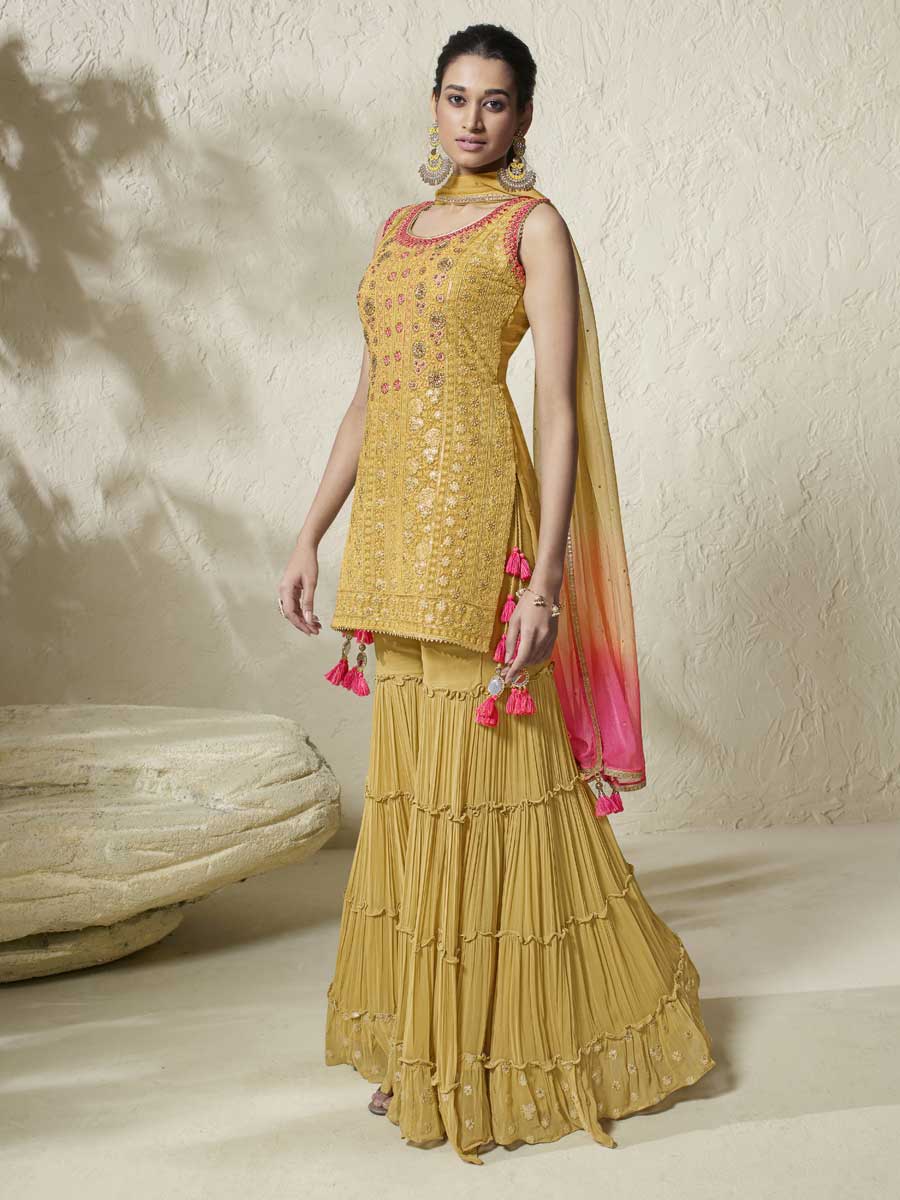Salwar suits have been a quintessential part of Indian fashion for centuries. These versatile outfits not only offer comfort but also exude elegance and charm. In this blog, we will dive deep into the world of Salwar suits, exploring their history, styles, and why they are a must-have in your wardrobe.
The Origins of Salwar Suits
Salwar suits trace their roots back to the Mughal era in India. The Mughals introduced this attire, blending their own Persian influences with the traditional Indian attire. The result was a comfortable yet regal outfit that became a symbol of grace and sophistication.

The Anatomy of a Salwar Suit
A Salwar suit typically consists of three main components:
- Kameez (H3): This is the upper garment that resembles a long tunic or dress. It comes in various lengths and styles, allowing for a wide range of looks.
- Salwar (H3): The loose-fitting pants that are tapered at the ankle. They provide unmatched comfort and ease of movement.
- Dupatta (H3): A long scarf or shawl that completes the ensemble. It can be draped in numerous ways to add flair to the outfit.
Styles of Salwar Suits
Salwar suits come in a plethora of styles, making them suitable for various occasions and body types. Here are some popular variants:
1. Anarkali Suit
Named after the legendary dancer Anarkali, this style features a flared, flowy kameez and fitted churidar pants. It’s perfect for weddings and formal events.
2. Patiala Suit
The Patiala suit is known for its baggy salwar with multiple pleats and a short kameez. It’s comfortable and great for casual outings.
3. Straight-Cut Suit
With a straight, fitted kameez and matching salwar, this style offers a sleek and modern look, ideal for office wear.
4. Palazzo Suit
Palazzo pants paired with a kameez create a fusion of traditional and contemporary fashion. This style is both trendy and comfortable.
Why Choose Salwar Suits?
Salwar suits offer a multitude of benefits that make them a wardrobe essential:
- Comfort and Ease: The loose-fitting salwar and breathable fabrics ensure all-day comfort.
- Versatility: Salwar suits can be dressed up or down, making them suitable for various occasions.
- Cultural Significance: They represent the rich heritage of Indian fashion and are a symbol of cultural pride.
- Flattering for All Body Types: With a wide range of styles, there’s a Salwar suit to suit every body shape.
Styling Your Salwar Suit
To make the most of your Salwar suit, consider these styling tips:
- Accessories: Add statement jewelry, such as jhumkas or bangles, to enhance your look.
- Footwear: Choose the right footwear, like mojris or heels, to complement your outfit.
- Makeup (H3): Opt for makeup that complements the colors and style of your Salwar suit.
- Hairstyle (H3): Experiment with different hairstyles, from elegant updos to loose curls, to complete your look.
Conclusion In conclusion, Salwar suits are more than just clothing; they are an embodiment of Indian culture and grace. Their versatility, comfort, and timeless appeal make them a wardrobe staple for women of all ages. Whether you’re attending a wedding, heading to the office, or simply going out for a casual dinner, a Salwar suit can always make you look and feel elegant.

